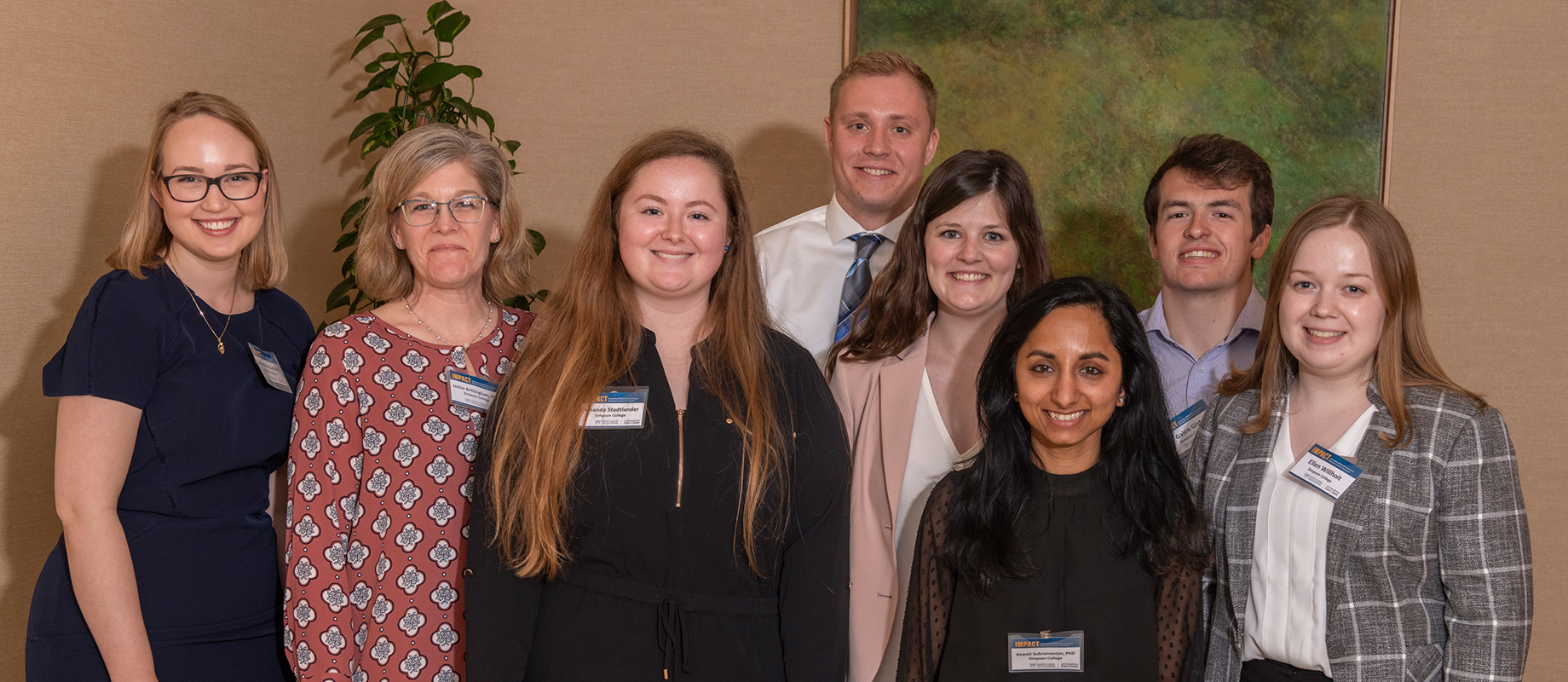Body
Hypoplastic left heart syndrome, or HLHS, is a rare birth defect in which the left side of the heart is severely underdeveloped. The condition develops during pregnancy and affects normal blood flow through the heart. HLHS carries a high mortality rate and there is no known cure.
Students participating in the Innovative Minds Partnering to Advance Curative Therapies (IMPACT) Symposium are trying to change that.
A group of Simpson College students along with students from 18 other colleges and universities across the Upper Midwest presented research at the 2019 IMPACT Symposium in Eau Claire, Wis. on April 6.
Hosted by the University of Wisconsin-Eau Claire, the co-curricular program encourages creative solutions to critical health questions through collaboration between undergraduate students and the Mayo Clinic Health System. Students are tasked with solving real-world health questions.
This year marked the first that Simpson received an invitation to participate, one of just two schools from the state of Iowa to get an invitation.
Faculty sponsors Dr. Jackie Brittingham and Dr. Aswati Subramanian made the five-plus hour trip with a group of 12 students. The participants represented a cross-section of multiple disciplines and grade levels. Students ranged from sophomores to seniors studying everything from physiology, cellular and molecular biology, to embryology and developmental biology.

“The broad participation of students led to diverse teams that brought unique perspectives and strengths to the competition,” said Brittingham, professor of biology and Division of Natural Science chair. “This competition was an opportunity for our students to engage with other students from much larger institutions. This opened their eyes to the strengths of the curriculum at Simpson College, as they were able to recognize how they stood out due to their unique liberal-arts based, problem-solving skills.”
Simpson’s teams spent months researching their solutions to HLHS. They submitted a written hypothesis describing their solutions and designed a poster to present at the symposium. Brittingham and Subramanian noted that the students excelled in all aspects of the project, from brainstorming ideas to the technical elements of presenting extraordinary bodies of work.
But for all of the impressive work done by the students, one thing, in particular, stood out to Brittingham.
“This was the first time in almost 20 years that I was able to get a group of students to work this hard on a goal that wasn’t part of a class or a graded assignment,” she said. “The outcomes exceeded my expectations.”
Brittingham and Subramanian will accompany students to the symposium again in 2020. They are planning coursework to include more opportunities for students to prepare for a competition of this magnitude.
Simpson’s teams included:
- Hannah Anderson, Benjamin Harrison, Emilie Hulse, Samantha Wuebker: Epigenetic Changes Induce Mutations in TBX Genes and NKX2-5 Expression
- Daniel Goldsmith, Hannahlynn Heinen, Amanda Stadtlander, Ethan Woodruff: Exosomes as vehicles for delivering paracrine signals to remediate cardiomyocyte death in HLHS
- Andre Flatt, Galen Gist, Carley Irlmeier, Ellen Willhoit: Early Gestation IGF-II Analog Treatment to Prevent Placental and Cardiac Abnormalities in HLHS